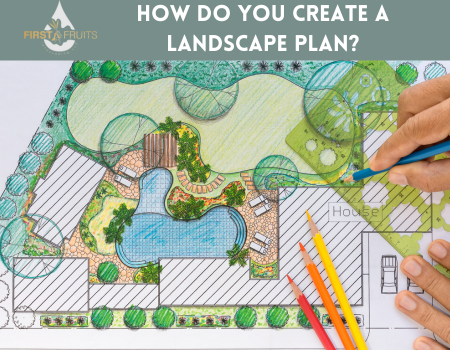A well-thought-out landscape plan acts as the blueprint for turning your outdoor space into an extension of your home. Similar to an indoor floor plan, a landscape design encapsulates the essence of an outdoor area, combining both natural and man-made elements until you have a design that elevates your space, boosts your curb appeal, and makes your outdoor spaces more functional and enjoyable for the whole family.
Creating a Professional Landscape Plan
Start with the Outline
Begin your landscape plan by envisioning the overview of the project area. Define the boundaries of the space, whether it’s the edges of a garden, the perimeters of your yard, tree lines, bushes, etc. Although the open nature of outdoor spaces can pose challenges, a well-defined outline helps create a visual boundary and allows you to fill in the space accordingly with your landscape plan.
Incorporate Existing Features
Identify and incorporate features that are immovable, such as rocks, waterways, existing buildings, large trees, or significant slopes. Another feature that landscape designers take into consideration is sunlight. Planning for the way it will hit the space, cast shadows, etc. is an existing feature that should always be considered. By highlighting and using the existing features in your outdoor space, you can highlight them in ways that boost the final outcome.
Create Ground Cover
Once the outline is in place, consider the ground cover that best suits your vision. Whether it’s lush green grass, vibrant flowers, drought-tolerant ground cover, or practical asphalt, use textures to enhance the visual representation. This step provides a realistic depiction of the landscape, aiding in the overall imagination of the completed project.
Add New Landscape Design Elements
This is where your outdoor oasis truly starts to take shape. Often one of the steps that many people choose to hire an experienced landscaped, you can now fill in and design your outdoor space. Integrate plant life such as trees, shrubbery, and flowers strategically. Incorporate walkways, stairs, and any additional structures like gazebos, sheds, or fountains. Don’t forget to include outdoor furniture and pools if they align with your vision. Each element contributes to the overall ambiance and functionality of the space and should be thoughtfully placed to ensure a seamless flow throughout the whole space.
Consider Practicality and Functionality
While designing, keep practicality and functionality in mind. Ensure that walkways and structures are placed for easy accessibility and optimal use. You’ll also want to consider upkeep,maintenance, annual costs, etc.
Use Technology to Your Advantage
In today’s age, technology can be a huge asset and let you visualize the full outdoor space in an interactive way. Additionally, many apps and programable systems help make everyday tasks such as watering, programable lights, etc. a breeze!
Creating a landscape plan can give you a vision of how you can transform your outdoor space into a personalized haven. While you may have a vision for the space, when it comes to designing and executing a landscape plan, many homeowners as well as businesses with landscape needs choose to hire a landscape professional to help elevate their space. Whether you’re planning a serene garden retreat or a bustling commercial space, a well-designed landscape plan is the key to a successful and gratifying outdoor experience. Are you ready to start your landscape plan? Contact us today!

